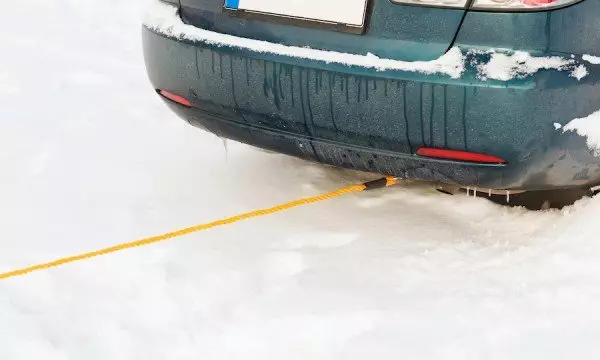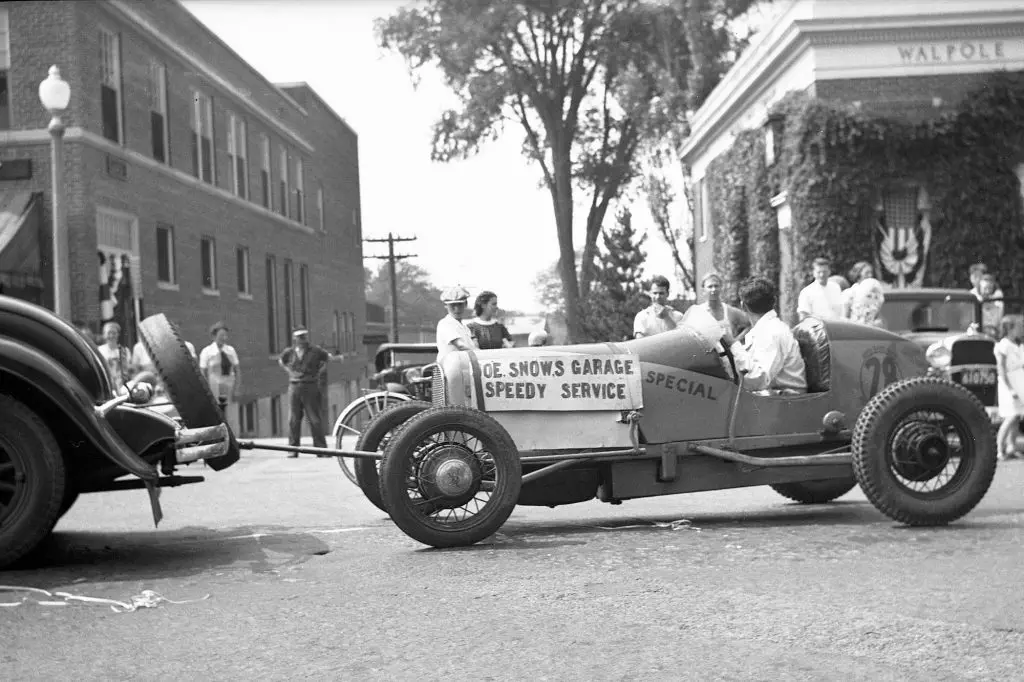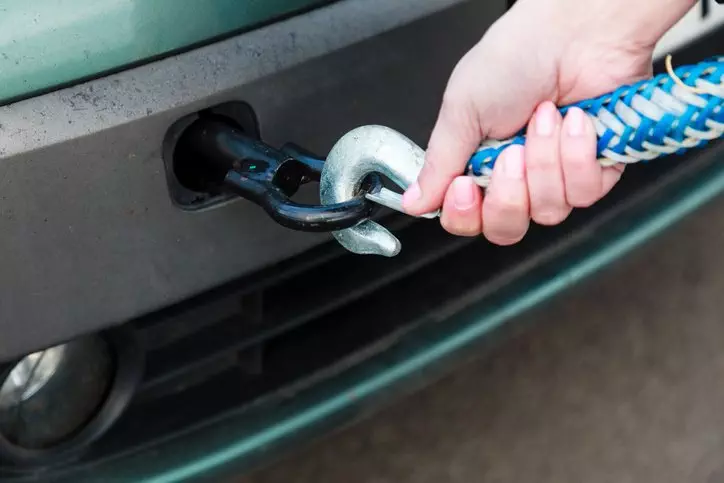In this article, we will explore the reasons why towing a car using a rope is not recommended. We will delve into the potential dangers and risks associated with this method, highlighting the importance of using proper towing equipment for both the safety of the vehicles involved and the individuals on the road. So, if you’ve ever wondered about the potential consequences of using a rope for towing, this article will provide you with valuable insights to consider.
Insufficient Control
Risk of Collisions
When towing a car with a rope, there is an increased risk of collisions due to the lack of control over both vehicles. Unlike towing with a proper towing mechanism, using a rope does not provide a stable and secure connection between the two vehicles. This can result in the towed vehicle swaying or drifting, making it difficult to maintain a straight path. In addition, sudden stops or turns can be more challenging to execute, increasing the likelihood of rear-end collisions or sideswiping other vehicles on the road.
Difficulty Steering
Towing a car with a rope also presents challenges when it comes to steering. The lack of a direct and rigid connection between the towing vehicle and the towed car can make steering more difficult and less precise. As a result, it becomes harder to smoothly navigate turns or maintain proper alignment on the road. This lack of control can lead to oversteering or understeering, putting both vehicles and their occupants at risk.
Inability to Brake Efficiently
One of the most critical aspects of safe driving is the ability to brake efficiently. However, when relying on a rope to tow a car, the braking performance of both vehicles is compromised. Towing with a rope does not allow for synchronized braking, making it harder to maintain a safe following distance or respond quickly to changes in traffic. This can increase the risk of rear-end collisions and create a dangerous situation for everyone on the road.
Excessive Strain on Components
Damage to Towing Vehicle
Towing a car with a rope can place excessive strain on the towing vehicle’s components, leading to potential damage. The added weight and resistance from the towed car can put stress on the engine, transmission, suspension, and brakes. Over time, this strain can cause premature wear and tear, resulting in costly repairs or even complete system failures. Additionally, the towing vehicle’s fuel efficiency may also be greatly affected, leading to increased fuel consumption and expenses.
Strain on Towing Mechanism
Using a rope to tow a car can also put significant strain on the towing mechanism itself. The rope may not be designed or equipped to handle the forces generated during towing. This strain can cause the rope to stretch, fray, or snap, resulting in a sudden detachment of the towed vehicle. Not only does this pose a risk to other road users, but it also increases the likelihood of damage to the towing vehicle and the towed car.
Risk of Brake Failure
Another critical concern when towing with a rope is the potential risk of brake failure. The strain placed on the towing vehicle’s braking system due to the additional weight can lead to overheating and diminished brake performance. In extreme cases, this can result in complete brake failure, jeopardizing the safety of everyone involved. Towing with a rope lacks the mechanisms necessary to distribute braking force effectively, making it a hazardous choice for towing a car.

This image is property of static.cms.yp.ca.
Unequal Towing Forces
Uneven Distribution of Weight
Towing a car with a rope can result in an uneven distribution of weight between the two vehicles. This imbalance can lead to unstable towing conditions and compromised vehicle handling. The towed car may bear too much weight on its rear wheels, causing them to lose traction, especially on slippery surfaces. Conversely, if the weight distribution is improperly placed on the front wheels, the steering and braking performance of the towing vehicle may be affected, compromising overall control.
Possible Vehicle Damage
The unequal distribution of towing forces can potentially cause damage to both the towing vehicle and the towed car. The excessive strain on the towed car’s suspension and chassis can result in structural damage and alignment issues. Additionally, the increased pressure on specific components of the towing vehicle, such as the frame or hitches, can lead to premature wear and potential failure. These damages can be expensive to repair and may affect the overall safety and performance of the vehicles involved.
Increased Risk of Accidents
Due to the unequal towing forces, there is an increased risk of accidents when using a rope to tow a car. The instability caused by the improper weight distribution can lead to uncontrolled swaying, fishtailing, or even jackknifing. These scenarios can result in the loss of control over both vehicles, potentially causing collisions with objects, obstacles, or other vehicles on the road. The risks associated with towing a car using a rope far outweigh the convenience it may seem to provide.
Lack of Visibility
Limited Rear Visibility
Towing a car with a rope can significantly impair the rear visibility of the towing vehicle. The presence of the towed car can obstruct the driver’s rearview mirror and side mirrors, making it difficult to have a clear line of sight. This limited rear visibility can limit the driver’s ability to monitor traffic and potential hazards behind them, increasing the chances of accidents. Without a clear view, it becomes challenging to make informed decisions and take appropriate actions while driving.
Reduced Awareness of Surroundings
In addition to limited rear visibility, towing a car with a rope can also reduce the driver’s overall awareness of their surroundings. The focus on maneuvering the two vehicles becomes the primary concern, diverting attention from other essential aspects of driving, such as observing traffic signals, scanning for pedestrians, or anticipating potential hazards. This diminished awareness can significantly impact the driver’s ability to react promptly and safely to changes on the road, putting everyone in the vicinity at risk.
Potential Blind Spots
Towing a car with a rope can create new blind spots for the driver of the towing vehicle. The presence of the towed car can obstruct the driver’s view of nearby lanes, making it difficult to spot vehicles approaching from the sides. These blind spots can increase the likelihood of collisions when changing lanes, merging, or making turns. Without a clear view of the surroundings, the driver’s ability to make safe and informed decisions is compromised.

This image is property of amrandtuckertowing.com.
Inadequate Communication
Limited Communication between Vehicles
Effective communication between the towing vehicle and the towed car is crucial for safe towing. However, using a rope as the towing method severely limits the ability to establish clear and reliable communication between the two vehicles. Unlike towing mechanisms equipped with safety features such as signaling lights or brakes, a rope lacks the means to transmit important signals or messages between the driver and the towed vehicle, resulting in a potential breakdown of communication.
Difficulty in Signaling Turns or Stops
Signaling turns and stops is essential for alerting other drivers on the road and ensuring safe towing. Unfortunately, towing a car with a rope makes it challenging to communicate such intentions effectively. Without synchronized signaling mechanisms, the towed car may not be able to indicate its movements, making it difficult for other drivers to anticipate or react accordingly. This lack of communication increases the risk of accidents and can lead to confusion or misunderstandings among other road users.
Increased Risk of Misunderstanding or Confusion
The insufficient communication between the towing vehicle and the towed car when relying on a rope can lead to heightened risks of misunderstanding or confusion. The lack of clear signals or messages can make it difficult for other drivers to determine whether the vehicles are connected or if the towed car is under the driver’s control. This confusion can result in unsafe overtaking attempts, sudden lane changes, or unpredictable maneuvers from other drivers, leading to potentially dangerous situations on the road.
Legal Restrictions
Specific Towing Regulations
Towing vehicles using a rope might not comply with specific towing regulations set by local transportation authorities. Jurisdictions have established specific guidelines and standards to ensure safe towing practices that prioritize the well-being of all road users. These regulations often include requirements for proper towing equipment, weight limits, and secure connections between vehicles. Towing a car with a rope can violate these regulations and may result in legal consequences, fines, or penalties.
Potential Traffic Violations
Using a rope as a towing method can also potentially lead to traffic violations. If a driver is found towing a car with a rope in jurisdictions where it is expressly prohibited, they can face penalties, such as tickets or the possibility of having their driver’s license suspended. It is essential to familiarize oneself with the local laws and regulations regarding towing to avoid legal issues and ensure the safety of both the driver and other road users.

This image is property of www.motorbiscuit.com.
Safety Hazards
High Probability of Snapping or Breaking
One of the most significant safety hazards associated with towing a car using a rope is the high probability of the rope snapping or breaking. Ropes are not specifically designed for towing purposes and lack the necessary strength and durability. The strain and tension placed on the rope during towing can exceed its capacity, leading to a sudden and catastrophic failure. This can result in the towed car becoming detached, posing a significant risk not only to other road users but also to bystanders and nearby property.
Potential Injury to Bystanders
In the event of a rope snapping or breaking while towing, there is a potential for bystanders or individuals near the vehicles to be injured. The sudden release of tension can cause the rope to whip or recoil, endangering anyone in its trajectory. Bystanders who are unaware of the risks associated with towing with a rope may inadvertently position themselves close to the vehicles, putting themselves in harm’s way. This emphasizes the importance of utilizing proper towing equipment to minimize the risk of injuries to those nearby.
Increased Risk of Damage to Property
When towing a car using a rope, there is a heightened risk of damage to surrounding property. The sudden detachment of the towed car can cause it to veer off course or collide with nearby objects, such as fences, walls, or parked vehicles. This damage not only incurs additional costs for repairs but also poses a potential liability for the driver involved in the towing process. By using appropriate towing mechanisms, the risk of damage to property is significantly reduced, ensuring a safer and more responsible towing experience.
Ineffective for Long Distances
Difficulty Maintaining Consistent Speed
Towing a car with a rope over long distances can pose challenges in maintaining a consistent speed. The varying road conditions and traffic patterns can cause fluctuations in the tension and strain on the rope, leading to an irregular towing experience. This inconsistency makes it difficult for the driver to maintain a steady speed, increasing the risk of accidents due to sudden changes in velocity. Proper towing mechanisms equipped with braking and stability features provide more reliable assistance in maintaining a consistent speed while towing.
Struggles with Hills or Inclines
Negotiating hills or inclines becomes significantly more challenging when towing a car with a rope. The added weight of the towed car puts extra strain on the towing vehicle’s engine, making it more difficult to climb or descend slopes. The lack of control and insufficient power distribution during these situations can lead to compromised traction, reduced braking efficiency, or even stalling on the incline. To ensure the safety of everyone involved, it is crucial to use proper towing equipment designed for these demanding conditions.
Excessive Wear on Towing Equipment
Towing a car using a rope over long distances also results in excessive wear and tear on the towing equipment. The continuous strain applied during the towing process can deteriorate the strength and integrity of the rope, making it susceptible to failure. Additionally, the repeated towing cycles can cause stress on the towing vehicle’s components, leading to accelerated wear and potential breakdowns. Opting for appropriate towing mechanisms prevents unnecessary damage to both the towing vehicle and the towed car, ensuring a more durable and reliable towing experience.

This image is property of www.holtsauto.com.
Limited Control in Emergency Situations
Challenges in Reacting to Sudden Stops or Obstacles
In emergency situations that require immediate stops or evasive maneuvers, towing a car with a rope can limit the driver’s ability to react effectively. The delayed response and reduced control associated with towing using a rope can lead to an increased stopping distance and a compromised ability to avoid obstacles. This lack of control in critical moments can result in rear-end collisions, collisions with obstacles, or even rollovers, further emphasizing the importance of utilizing proper towing equipment for optimal control and safety.
Inability to Swiftly Maneuver for Safety
Swift maneuverability is crucial during emergency situations to avoid potential accidents or hazards on the road. However, towing a car with a rope hampers the driver’s ability to make swift and decisive maneuvers. The delayed and imprecise response connected with towing using a rope can impede the driver’s capability to quickly change lanes or move out of harm’s way. This can significantly increase the risk of being involved in accidents or being unable to avoid potential hazards swiftly and safely.
Inefficient Handling of Road Hazards
Encountering road hazards, such as potholes, debris, or uneven surfaces, can be challenging to handle when towing a car with a rope. The reduced stability and control associated with towing using a rope make it more difficult to navigate around or over road hazards. The towed car can become destabilized, leading to loss of control or further damage to the vehicle. Utilizing appropriate towing equipment that offers increased stability and control helps minimize the risks associated with encountering road hazards while towing.
Dependence on Rope Strength and Condition
Risk of Rope Snapping or Breaking
When towing a car using a rope, there is a constant dependence on the strength and condition of the rope. Over time, ropes can degrade due to exposure to various elements, wear and tear, or simply age. The strain placed on the rope during towing can accelerate its deterioration, increasing the risk of it snapping or breaking unexpectedly. This sudden failure can have severe consequences, including accidents, injuries, or damage to both vehicles involved and others on the road.
Necessity for Regular Inspections and Maintenance
To ensure safe towing with a rope, regular inspections and maintenance are essential. The rope must be examined thoroughly for signs of fraying, stretching, or weakening before every towing operation. Additionally, the towing vehicle’s components, such as the attachment points and hitches, require regular and proper maintenance to ensure their integrity and functionality. Neglecting to perform these inspections and maintenance procedures can result in compromised towing safety and potential failures during the towing process.
Potential Damage to Vehicle Body
The use of a rope as a towing method poses a risk of damage to the vehicle’s body, especially in areas where the rope makes contact. The constant friction and rubbing against the towed car’s body can cause scratches, paint damage, or even denting. These damages not only affect the aesthetic appearance of the vehicle but may also result in more severe structural issues over time. Utilizing appropriate towing mechanisms and equipment prevents these unnecessary damages, ensuring the preservation of the vehicle’s condition.
In conclusion, while it may seem convenient in certain situations, towing a car with a rope is not advisable due to the numerous risks and limitations it presents. The insufficient control, excessive strain on components, unequal towing forces, limited visibility, inadequate communication, legal restrictions, safety hazards, ineffectiveness for long distances, limited control in emergency situations, and dependence on rope strength and condition all contribute to the hazards associated with this towing method. To ensure the utmost safety for both the driver and other road users, it is crucial to use proper towing mechanisms and equipment designed specifically for towing operations. By doing so, the risk of accidents, injuries, and property damage can be greatly minimized, ensuring a safer and more efficient towing experience.

This image is property of www.durhamtowingcompany.com.